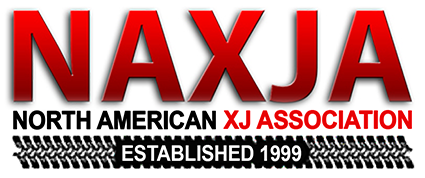Hi!
While solving issue that turned to be caused by upstream O2 sensor I probably replaced CPS that was ok with factory-broken one, I suspect that it causes another issue now. I have 1997 4.0 XJ, what is happening is: randomly engine lowers (this happens more often, in idle it goes down to like 300 RPMs) or raises (rarely, in idle to about 1500-2000 RPMs) RPMs for fraction of second. These changes happen on idle and while driving. It happens only when the engine is hot. I can hear the RPMs change and also see it on gauge. To make sure that crappy CPS is the source I need some knowledge, maybe someone of you can help me. With simple OBD interface (ELM327) I can see that ignition timing angle changes while the problem occurs, when engine works ok then the angle is about 12 degrees, while the issue shows up then the angle goes as low as 4 degrees or up to 20 degrees, the direction of timing angle change is correlated with RPMs change direction, sorry, I do not remember now which directions are "paired", if it matters I will check it.
My questions are:
1) Am I right that in my case (the engine has old school ignition rotor) ignition timing angle cannot be changed by ECU or anything else and if mechanically everything is ok then these changes are caused by broken CPS or cam shaft position sensor? To be clear: I know that angle can be adjusted with the cap, what I mean is that engine/ECU itself cannot modify the angle in real-time. In other words: in my case the ignition angle should be more or less constant regardless of RPMs, load or anything else, right?
2) Am I right that timing angle read through OBD is calculated as difference between CPS and camshaft position sensor readings and my symptoms could be caused by failure of one of these sensors?
3) If 1. and 2. answers are yes the is there a method to check which sensor is broken?
4) My theory is that broken CPS or camshaft sensor randomly causes fuel injection at wrong time and that causes RPMs change. Does it make any sense?
Thank you for any help!
While solving issue that turned to be caused by upstream O2 sensor I probably replaced CPS that was ok with factory-broken one, I suspect that it causes another issue now. I have 1997 4.0 XJ, what is happening is: randomly engine lowers (this happens more often, in idle it goes down to like 300 RPMs) or raises (rarely, in idle to about 1500-2000 RPMs) RPMs for fraction of second. These changes happen on idle and while driving. It happens only when the engine is hot. I can hear the RPMs change and also see it on gauge. To make sure that crappy CPS is the source I need some knowledge, maybe someone of you can help me. With simple OBD interface (ELM327) I can see that ignition timing angle changes while the problem occurs, when engine works ok then the angle is about 12 degrees, while the issue shows up then the angle goes as low as 4 degrees or up to 20 degrees, the direction of timing angle change is correlated with RPMs change direction, sorry, I do not remember now which directions are "paired", if it matters I will check it.
My questions are:
1) Am I right that in my case (the engine has old school ignition rotor) ignition timing angle cannot be changed by ECU or anything else and if mechanically everything is ok then these changes are caused by broken CPS or cam shaft position sensor? To be clear: I know that angle can be adjusted with the cap, what I mean is that engine/ECU itself cannot modify the angle in real-time. In other words: in my case the ignition angle should be more or less constant regardless of RPMs, load or anything else, right?
2) Am I right that timing angle read through OBD is calculated as difference between CPS and camshaft position sensor readings and my symptoms could be caused by failure of one of these sensors?
3) If 1. and 2. answers are yes the is there a method to check which sensor is broken?
4) My theory is that broken CPS or camshaft sensor randomly causes fuel injection at wrong time and that causes RPMs change. Does it make any sense?
Thank you for any help!
